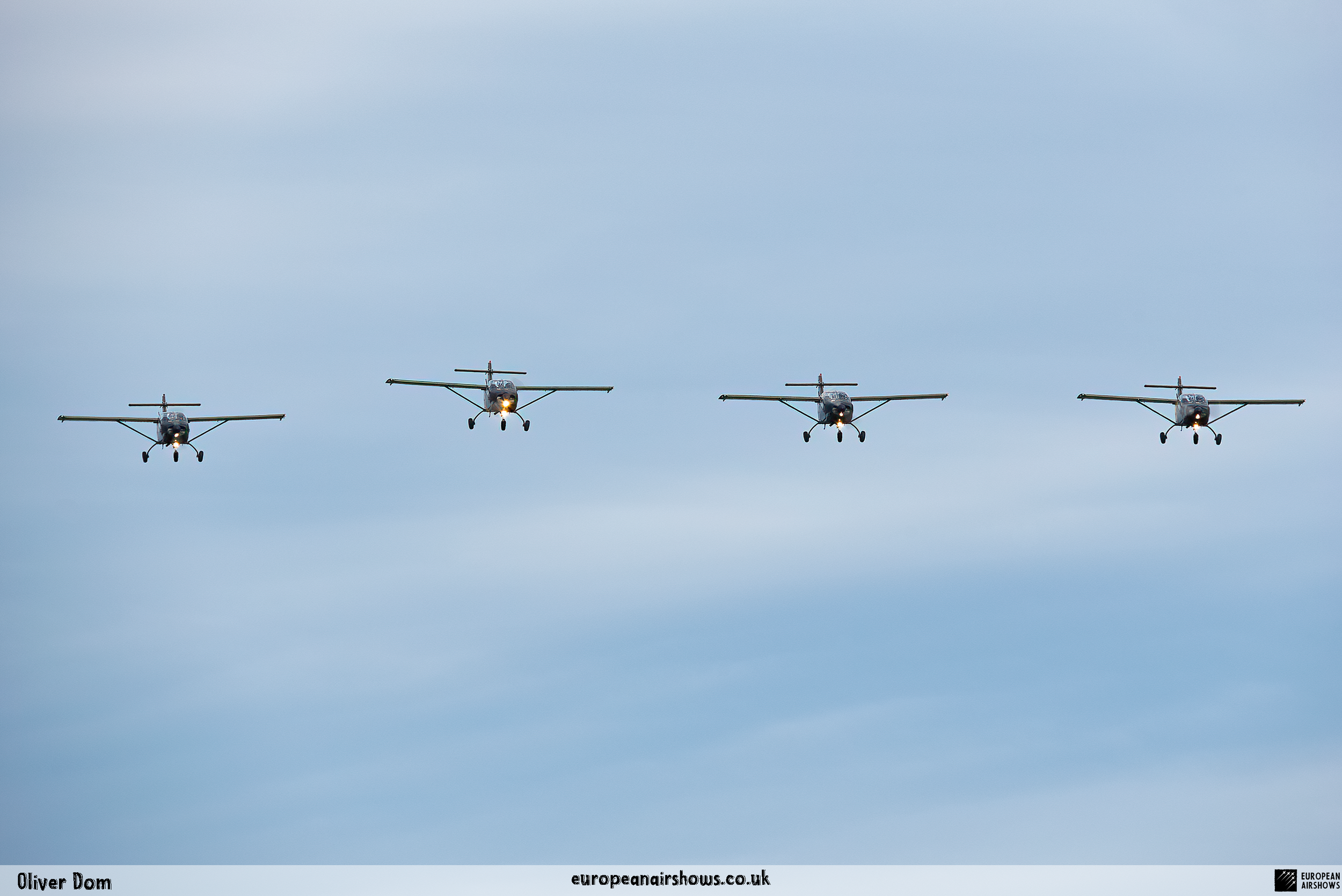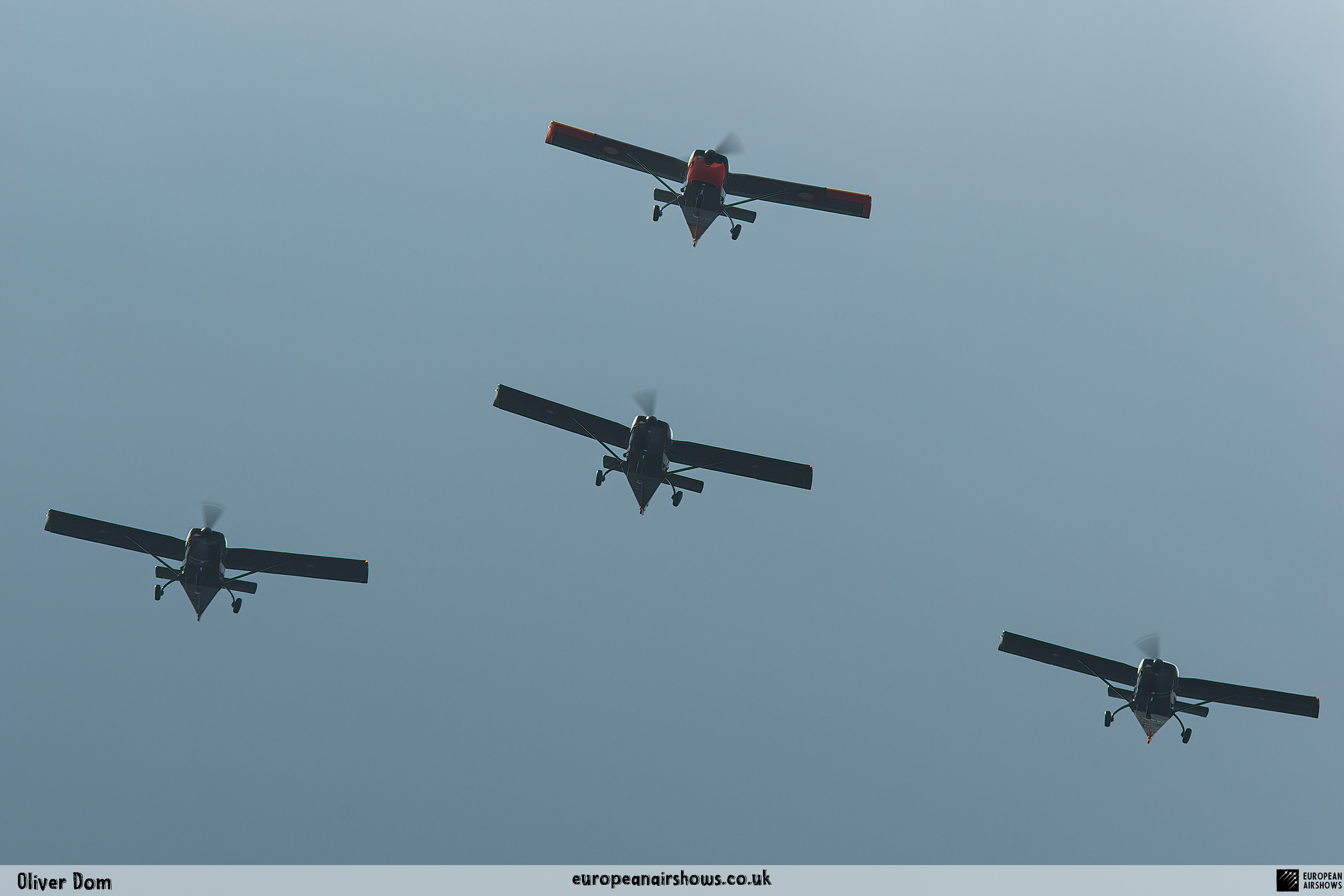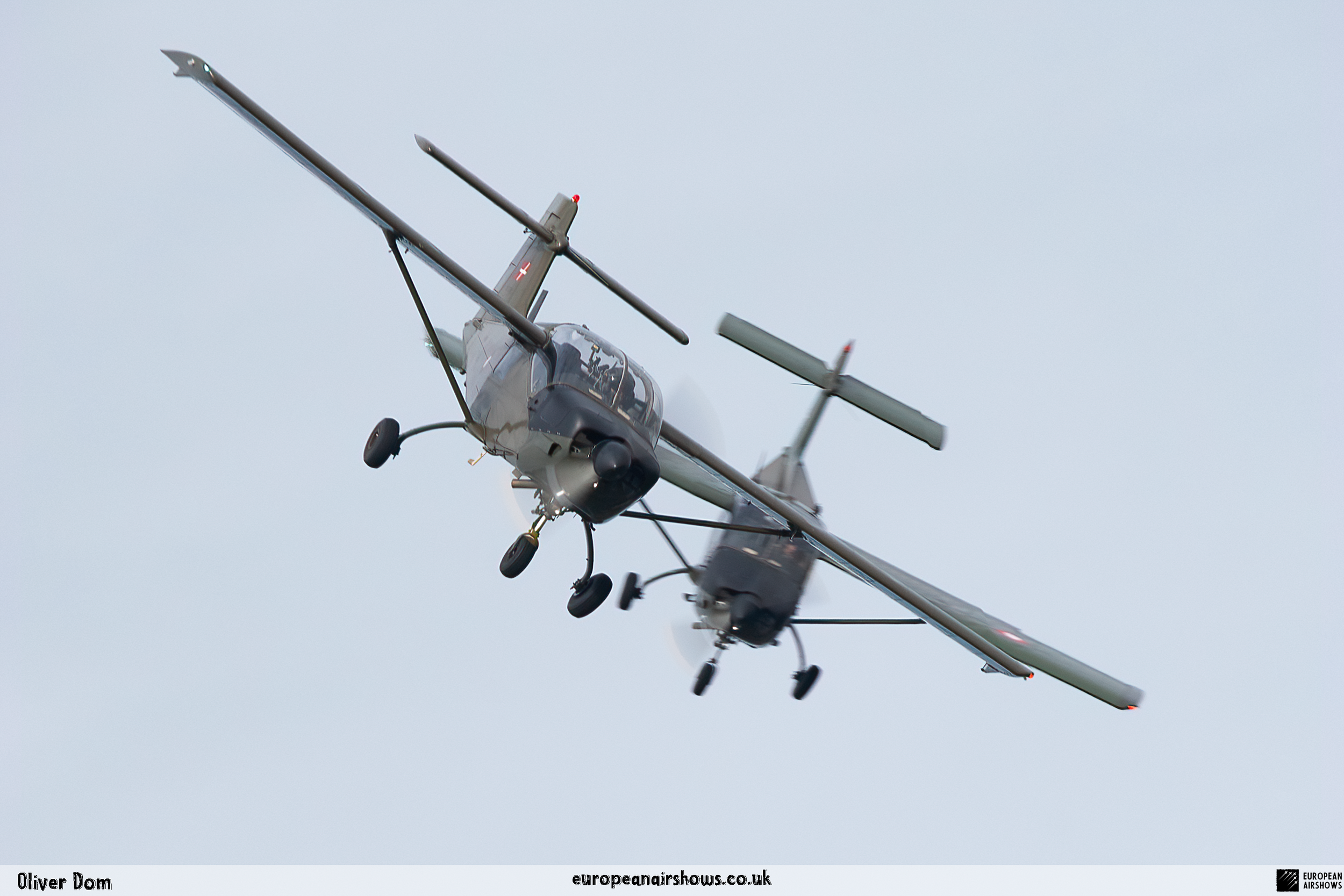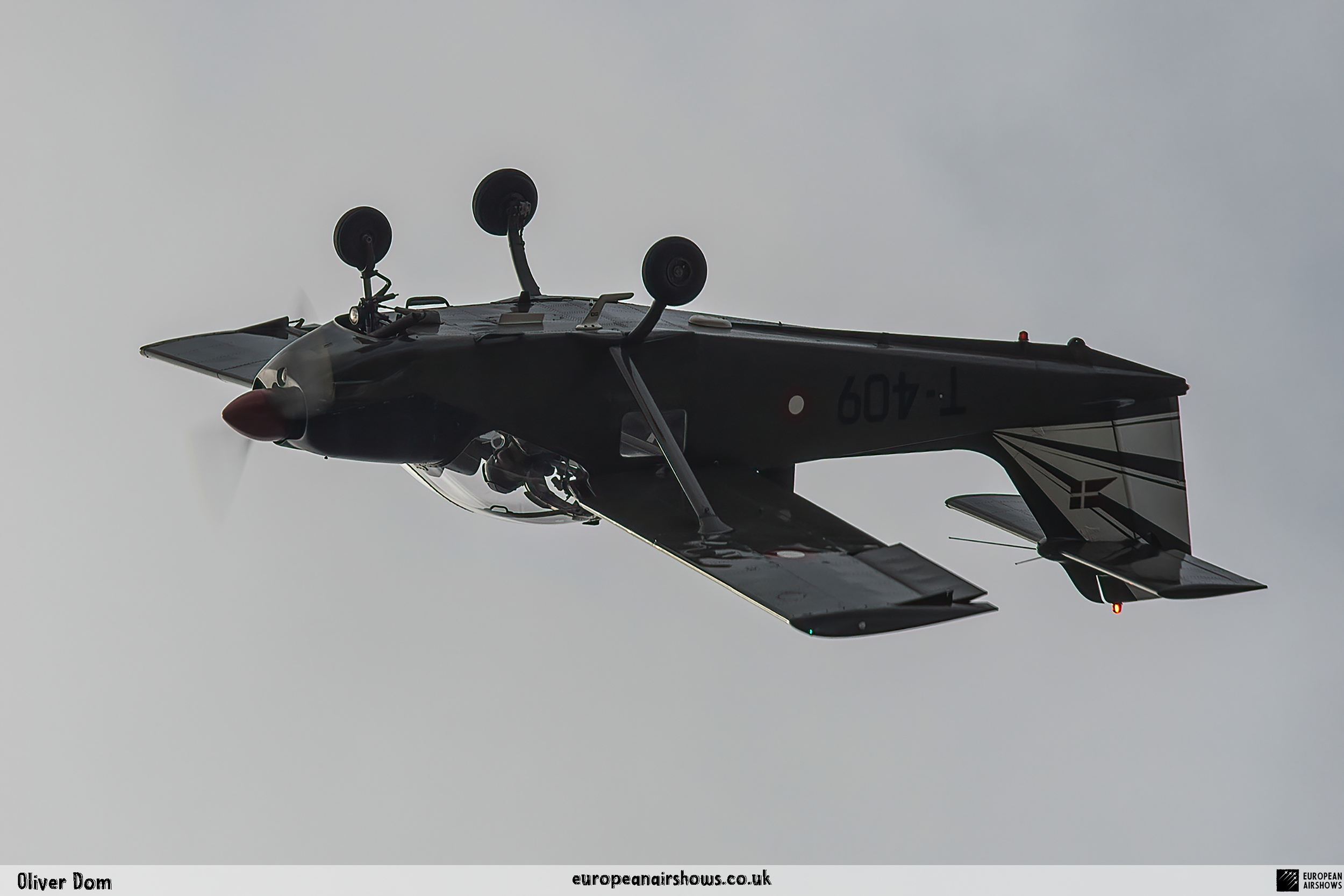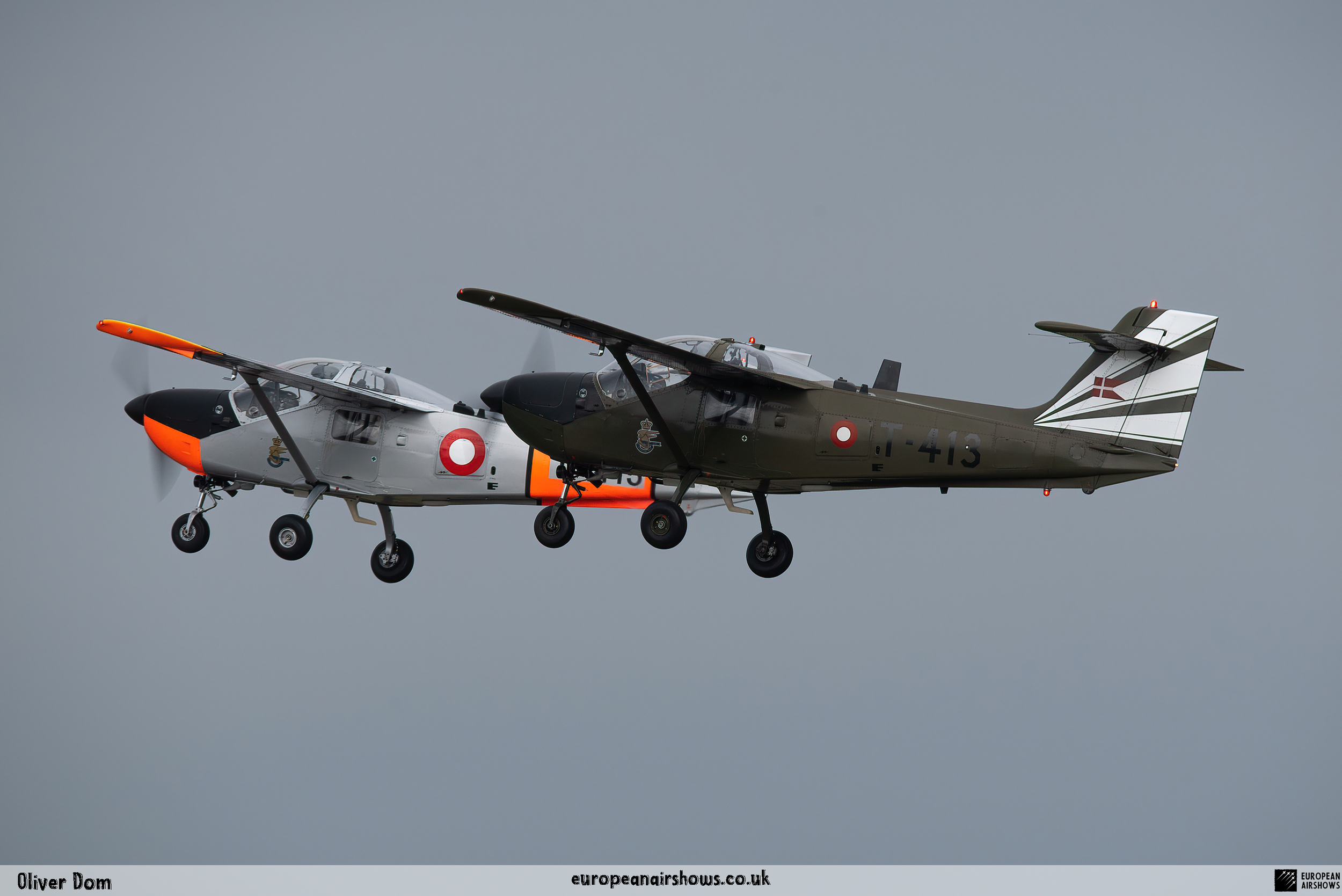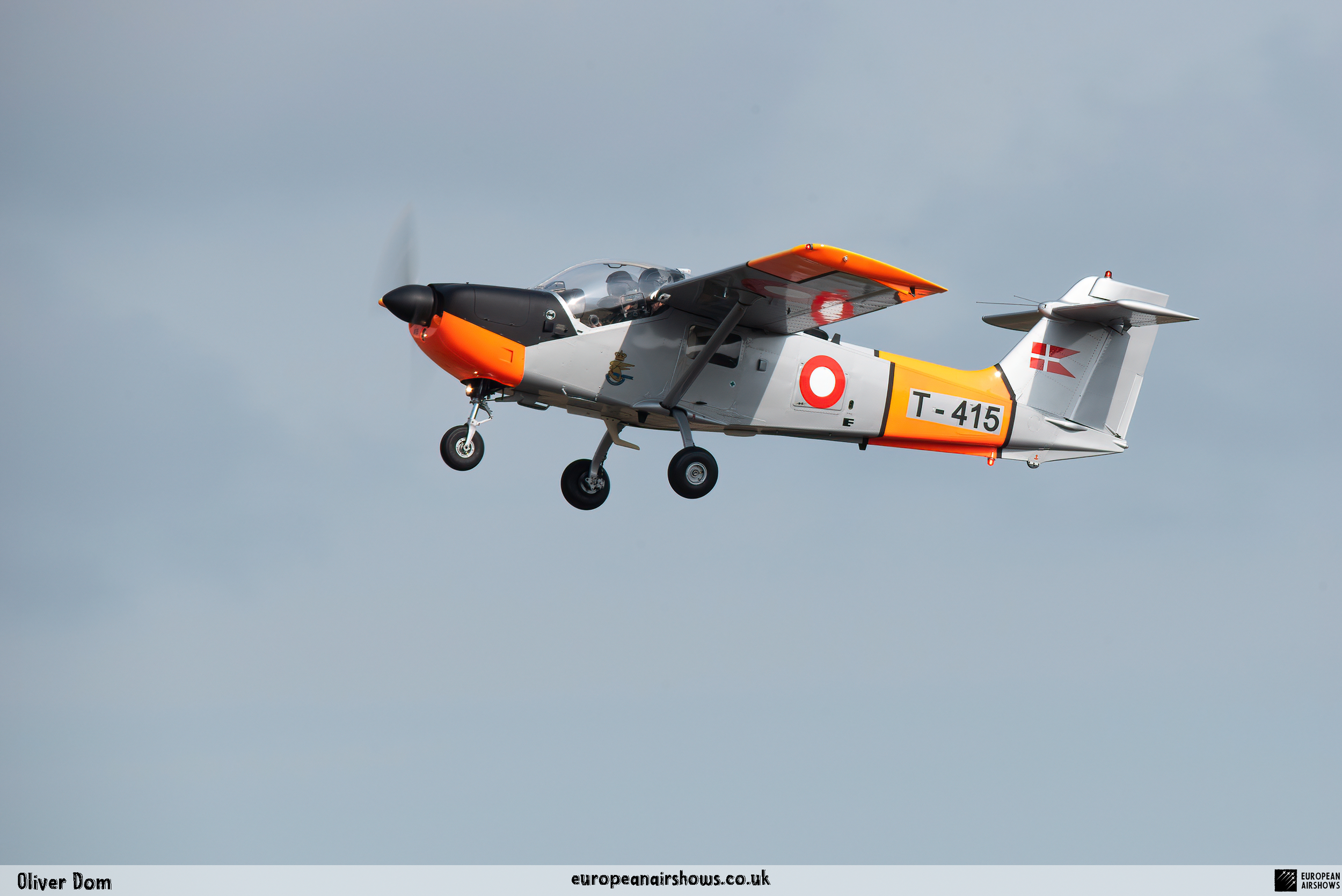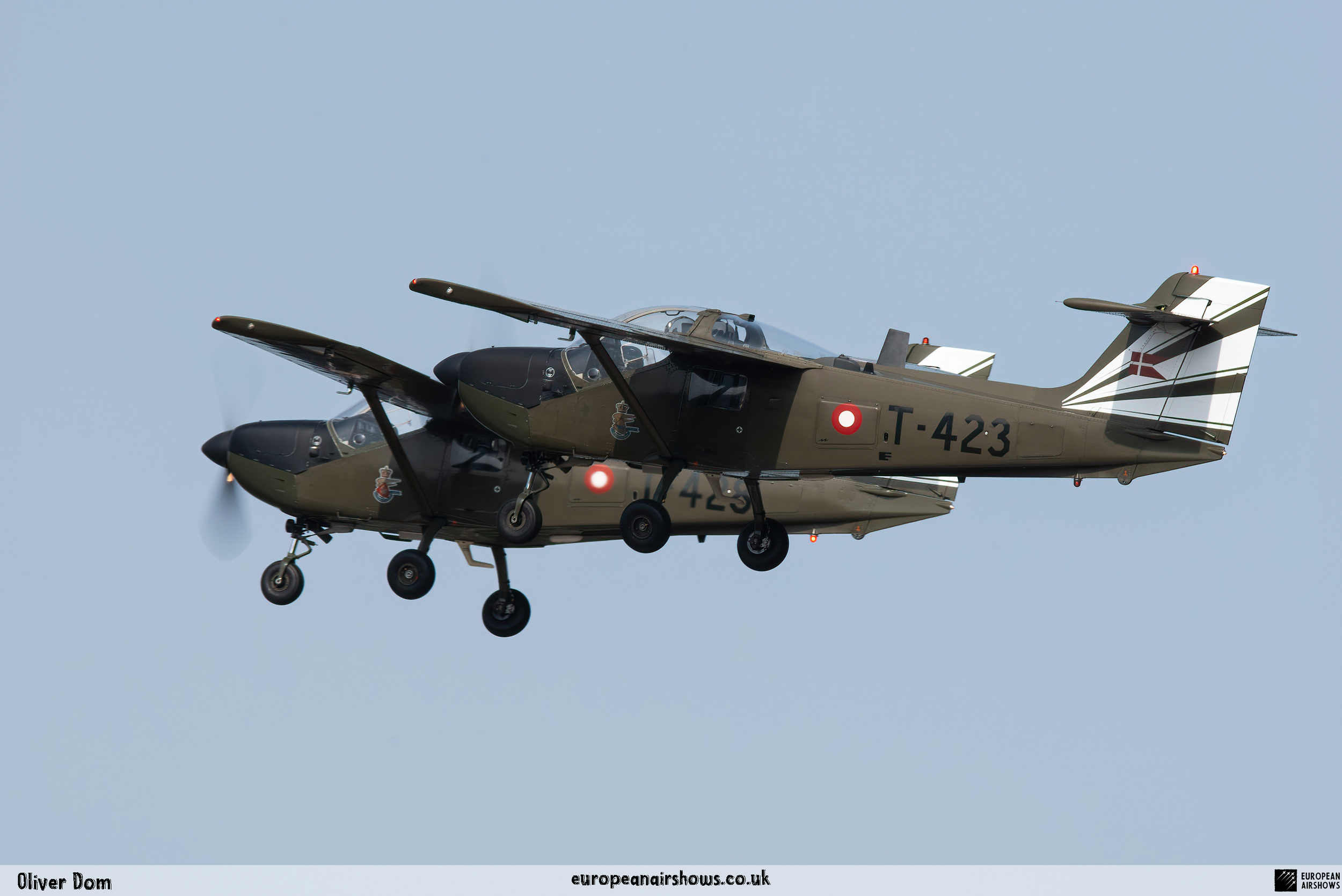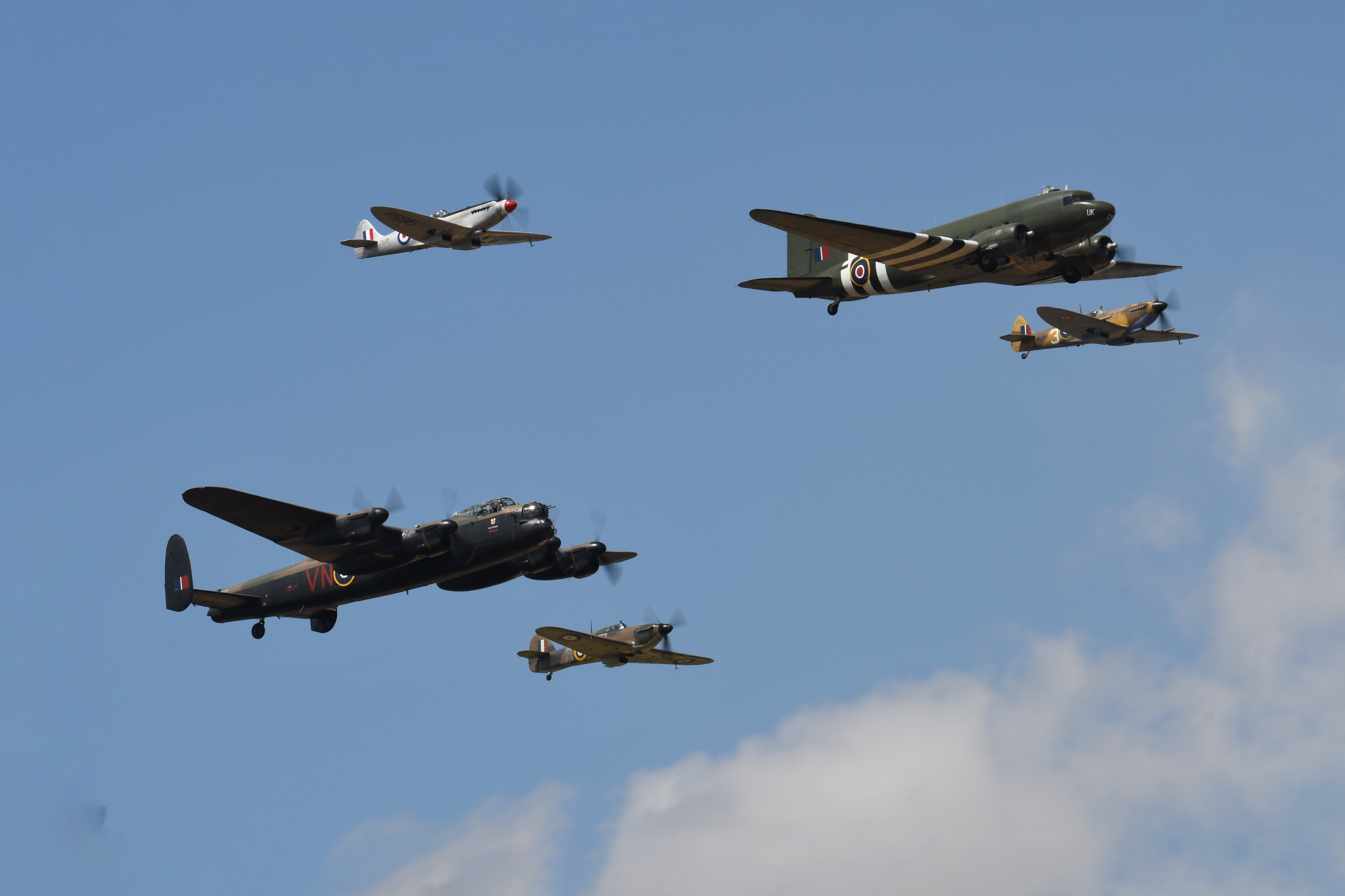Baby Blue
Country
Denmark
Size
4/5 Aircraft
Base
Karup Air Base
“Baby Blue” is the official aerobatic team of the Royal Danish Air Force and is part of the RDAF Flying School situated at Karup airbase in the Western part of Denmark. The team consists of five Swedish built Saab T17 Supporter basic trainer aircraft rated to +6g and -3g and powered by a Lycoming 10-360-A1B6 boxer engine which produces 200 HP. The pilots in the team are all volunteer flight instructors from the Flying school and have different aviation backgrounds. The team has only a few displays outside of Denmark and mostly appears locally doing flypasts and displays encouraging the young generation to join the Danish Air Force. The SAAB T-17 Supporter, as it became known in Denmark, is of high-wing construction with an all-metal fuselage, which makes it very strong. The aircraft can carry two or three people, depending on the internal configuration. The cockpit has two seats for a pilot and navigator or a student pilot and an instructor, seated in a side-by-side configuration. The T17 is very prone to turbulence and is not an ideal aircraft for formation flying making the pilots work very hard through their 10-minute display routine to keep good tight formations.
For many years it has been a tradition that aircraft from the Flyveskolen, performs a flypast at Svinøkirke at sunset on 4th May in conjunction with the memorial service held to mark the Danish liberation during World War II. The fly-past consists of four aircraft flying over the church in Finger Four formation, before returning to perform a Missing Man routine to honour fallen allied pilots. The call sign for this formation is Baby Blue. These fly-pasts inspired some of the instructor pilots to rehearse close formation flying when their daily duties allowed. In the mid-80s they were able to perform their first display on four aircraft in close formation.
A number of former F-104 Starfighter pilots, now instructors, wanted to take the concept further and together with a former F-100 Super Sabre pilot, they developed a display programme. The programme was approved by the Tactical Air Command and in the following years the team, named Baby Blue, flew at RDAF Open House air shows and various other events. However, as the four instructor pilots left the Flyveskolen, the Baby Blue project came to a halt.
In 1993, when the Flyvekolen moved to Karup, it coincided with the withdrawal of the Draken also based at Karup. This meant that a large number of ex-Draken pilots joined the Flyveskolen as instructors and they were keen to restart the Baby Blue project. One of the pilots originally involved in the Baby Blue project was now the Operational boss of the Flyveskolen and thus the project was revived. The new instructor pilots had many new ideas for the display routine, but a number of them had to be abandoned when they realised that they could not take maneuverers flown in the Draken and transfer them directly to the T-17. They did however manage to put together a display routine that was far more advanced than the one flown in the ’80s. The new routine was approved by the Tactical Air Command again and the Flyveskolen was once again able to supplement their solo T-17 display with a four-ship formation team. Baby Blue is now a firm fixture at all Danish Air shows and even travel abroad for air shows when the opportunity arises.
| Back to Top |
Saab T17 Supporter
Saab MFI-15 Safari, also known as the Saab MFI-17 Supporter, is a propeller-powered basic trainer aircraft used by several air forces. On the 11th of July 1969, Saab flew the prototype of a two/three-seat civil/military trainer or general utility aircraft allocated the designation Saab-MFI 15. Developed at Malmö Flygindustri, it was powered by a 119 kW Avco Lycoming IO-320-B2 flat-four engine and with a conventional low-set tailplane. The latter was later modified to a T-tail configuration to minimise damage when operating from rough airfields.
On the 26th of February 1971, the prototype was flown with the more powerful Avco Lycoming IO-360-A1B6 air-cooled flat-4 piston engine, which became the standard powerplant for the production version, now designated as the Saab Safari. A braced shoulder-wing monoplane with fixed tricycle landing gear, available optionally with tail-wheel landing gear, it provides side-by-side enclosed accommodation for two and has dual controls as standard. It has forward-swept wings to maintain the correct centre of gravity. This design constraint applies also to the ARV Super2 and the Bölkow Bo 208 Junior, the latter a license-built version of the Malmö MFI-9 Junior.
A military version designated originally Saab-MFI 17 was flown on the 6th of July 1972 and differed from the Safari by being equipped more specifically for use as a military trainer, or for artillery observation or forward air control and liaison.; this version was later named Saab Supporter. The SAAB T-17 Supporter, as it became known in Denmark, is of high-wing construction with an all-metal fuselage, which makes it very strong. The aircraft can carry two or three people, depending on the internal configuration. The cockpit has two seats for a pilot and navigator or a student pilot and an instructor, seated in a side-by-side configuration. In the cargo compartment behind the two pilots, an extra seat can be fitted and it is then possible for a passenger to squeeze into the back. The T-17 is equipped with a fixed tricycle landing gear and skis can be added for landing in the snow.
| Back to Top |
